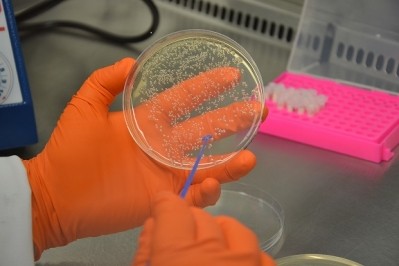GAO argues again that the US should unite the 19 agencies that oversee food safety under one system

The recommendation could continue to go unheeded, however, if the US Department of Agriculture, one of the 16 federal agencies that currently oversees the 30 food safety and quality laws on the books, gets its way.
In a 52-page report released Feb. 13, GAO details why the US needs a national strategy to guide federal food safety oversight and address ongoing fragmentation, and details what that strategy might look like.
“Although the US food supply is generally considered safe, foodborne illness remains a common, costly, yet largely preventable public health problem,” with roughly one in six Americans falling ill each year – 128,000 of whom are hospitalized and 3,000 of whom die, GAO says in the report.
“CDC data also shows that the number of reported multistate foodborne illness outbreaks is increasing,” which is “notable because, although multistate outbreaks make up a small portion of total outbreaks, they affect greater numbers of people,” GAO notes.
It attributes the uptick to in part to improved detection and investigation methods, which is good, but could still be reduced if the agencies that oversaw food safety better coordinated their efforts.
While a change in oversight likely would wreak havoc temporarily on manufacturers’ compliance efforts, GAO argues that the current system demands a high cost from companies in terms of recalls and reputational damage.
For support it points to a study conducted by the Grocery Manufacturers Association in October 2011 that found half of the companies surveyed conducted a recall in the prior five years and that the episode cost 29% between $10-29 million and $30 million or more for 23% of respondents.
GAO also argues that even as the food safety system improves, risks could continue to rise given that an increasing portion of food is imported, “which stretches the federal government’s ability to ensure the safety of these foods,” consumers are eating more fresh foods and the segments of population most susceptible to foodborne illness is growing.
However, the report also notes that the outbreaks continue in part because fragmented oversight could allow for some issues to fall between the cracks.
“In January 2007, because of risks to the economy and to public health and safety, we added the federal oversight of food safety to our list of areas at high risk for fraud, waste, abuse and mismanagement, or most in need of transformation,” GAO says.
The concerns were also noted in 2014 and 2015, but continue to be a problem because the agencies that oversee food safety have not created a unified plan for oversight, GAO argues. It notes that the bulk of food safety oversight falls to FDA and USDA, but other players include the Department of Commerce, which provides fee-for-service exams of seafood for safety and quality, the Environmental Protection Agency, which regulates pesticide chemical residues, the US Department of Transportation, which oversees the sanitary transportation of food, the Homeland Security Department, which inspects imported foods, plants and live animals, the Treasury Department, which enforces distribution of alcohol, and others.
Experts agree a national strategy is needed
In an effort to bolster its recommendation this time, GAO hosted a two-day meeting with 19 food safety and other experts who all agreed “there is a compelling need to develop a national strategy to address ongoing fragmentation and improve the federal food safety oversight system,” GAO notes in the report.
The experts recommended that such a strategy should include a clear purpose, leadership at the highest level of the administration with authority to implement a strategy, resources, clear milestones for accountability and short-term actions to help the strategy gain traction.
USDA is not convinced
Of the several agencies that reviewed GAO’s recommendations prior to publication, USDA is the only one that firmly disagrees – noting at least six reasons why a national strategy is not necessary or not feasible.
“USDA is not yet convinced that developing and implementing a national strategy would result in significantly different outcomes in protecting public health by preventing foodborne illness with our partners,” it writes.
Among the many reasons it says such a change is not feasible is that it would require congressional approval to reallocate funding, modify the statutes FSIS implements and consolidate intra-agencies.
It also argues that some of GAO’s recommendations “place disproportionate value on expert opinion rather than on data-driven analysis.”
The agency also takes umbrage at not being fully recognized for the collaborative efforts it has undertaken with other agencies since 2014.
Recognizing that a unified system could be mandated whether it likes it or not, USDA asks that “should major changes to the federal food safety system be proposed, it is imperative that they are data-driven, well-designed, collaborative, and ultimately, continue to enable the United States to have the safest food supply in the world.”
After reviewing USDA’s response and nitpicking a few details, GAO stands by its recommendation for a single oversight system to serve as a strong focal point to advance food safety.







